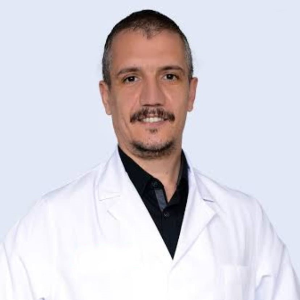Abstract:
The aim of this study is to demonstrate that standardized skinfold measurement tables for healthy children do not yield accurate results in monitoring the growth of children with spina bifida and to propose a new measurement site providing more precise results.
Introduct?on :Spina Bifida (SB) is a congenital neural tube defect resulting in an open spine that fails to close properly. It affects 3 out of 1000 children in Turkey, ranking second in prevalence among congenital diseases after Down Syndrome. Ambulation levels and the presence of scoliosis and kyphosis vary among SB children, affecting anthropometric measurements, especially skinfold measurements.
Method :The study included 413 SB patients aged 0-18, comprising 222 girls and 191 boys. Skinfold measurements were taken from subscapular, biceps, triceps, and the suggested new region, the suprailiac region. Evaluations were based on skinfold percentile curves for healthy children aged 3 months to 5 years by the World Health Organization, as specific percentile studies for SB children were lacking.
Results :Among 222 girls, scoliosis was observed in 30, kyphosis in 10, both in 6, hemimetameric shift in 1, and spondyloptosis in 1. Among 191 boys, scoliosis was observed in 30, kyphosis in 7, and both in 6. Vertebral deformity was recorded in 21.6% of girls and 22.5% of boys, totaling 22% across the study group.
Conclusion: Examination of subscapular and triceps skinfold measurements based on WHO percentile curves revealed discrepancies due to ambulation level variations and existing deformities in SB patients. A significant portion of SB patients are plejic, using arm crutches or wheelchairs, which affects triceps and biceps measurements. Subscapular measurement is also affected by the high incidence of scoliosis and kyphosis. Thus, a new measurement site unaffected by ambulation levels, the suprailiac region, is proposed for more accurate assessments.
Audience Takeway
- They will understand the prevalence of spina bifida in Turkey and its impact on anthropometric measurements, including skinfold measurements. The methodology employed in the study, including the inclusion of SB patients aged 0-18 and the evaluation based on skinfold percentile curves, will be highlighted. The results section will provide insights into the prevalence of scoliosis, kyphosis, and vertebral deformities among SB patients, emphasizing the discrepancies observed in skinfold measurements due to ambulation level variations and existing deformities. Finally, the presentation will propose a new measurement site, the suprailiac region, as a more accurate alternative for assessing growth in children with spina bifida.




